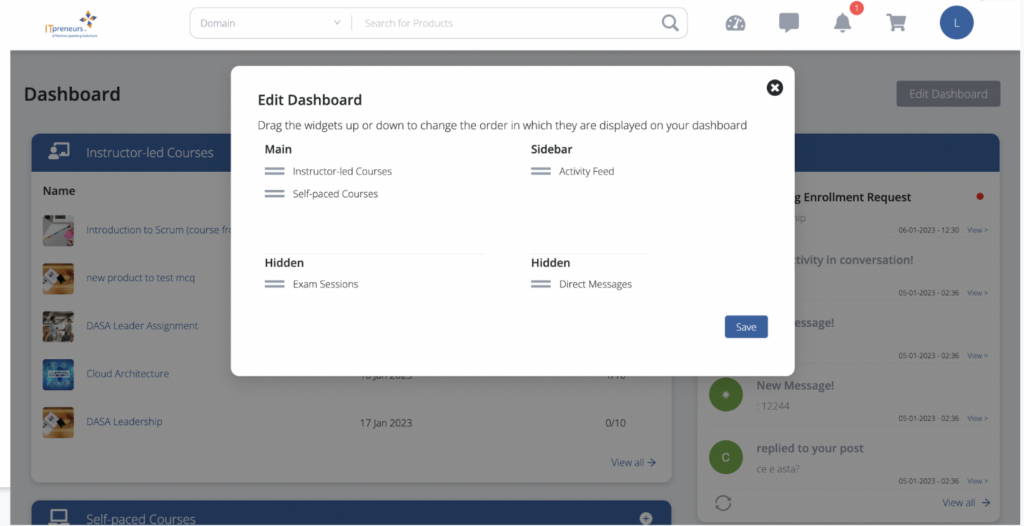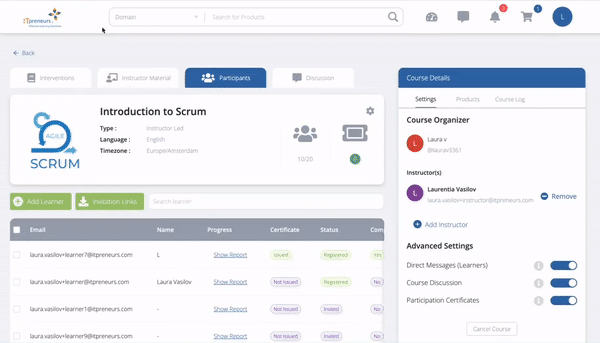A Happy New Year to all trainers out there. Being my first blog of the year, let’s start with a Trainer’s reality and give you some tips and resources that may make your 2015 that much easier.
It’s Always an Adventure so Make the Best of It
Teacher, trainer, facilitator, coach, mentor, guide… we are all of these things and more, working within the boundaries set by the frameworks, exam conditions and syllabus set by the core centralized controlling bodies such as Axelos, ISACA etc. But let’s set aside the technical in terms of the content and accreditation you’re required to have and focus on some other aspects. That of the where-with-all the trainer needs when they travel.
For me, as an ITSM trainer, the life of a traveling trainer goes from the sublime to the ridiculous but at no time is it ever an ordinary experience. Coming to you from two trains, four planes, three airports, hotels and training locations I’ve had time to pen this little piece for you in whiling away the long waits in various lounges, gates, platforms and cafes. An observer of the lives traipsing past, there’s something romantic about finding a cozy corner where you can imagine you might be enjoying your other career as a constant tourist and writer.
Even if you are attached to a team of other trainers, most times you are traveling solo. You need to enjoy your own company as well as that of others (including strangers). From cities to small towns—it’s one thing to travel around your own country but taking overseas assignments is another level up again. Food, language, culture—it can be a dream or a nightmare but always an adventure. So where possible, don’t hide with room service every night—connect with other ITSMers in the location if possible and try at least one local restaurant, museum, gallery or shopping place.
Prepare for the Unexpected
Start with the last minute check that you have all your travel documents. When you live six hours from the major airport you want to avoid the disaster of discovering your spouse’s passport instead of your own. Packing Smart is essential—when in doubt, leave it out. Take the things for your own comfort but you may find other items handy, like a corkscrew—yes, in some countries you will not find one. Some items you will later discover you need only after you’ve arrived—that’s why you have the sundry column on your expense form! You’ll find some very useful packing lists and advice at the end of the blog.
For all that we work in a world of electronic devices, deprivation occurs. Flat batteries, signal dips, no power access, flight mode restrictions just to name a few. The most difficult is trying to find a café table with a working power outlet close by that someone else hasn’t already snaffled. Out comes my trusty writing pad, pen and a real page-turner novel.
The time zones can confuse you, and it wouldn’t be the first time I’ve nearly landed face down in my coffee, so listen to your body and know how to refresh in those moments between. My phone alarm and time zone app is a constant companion, especially for those times when I fall asleep on the train and missing my stop would cause quite a calamity. Then there are the surprises… you arrive but your bag decided to stay at the last connection. I usually keep at least one change of clothes in my carryon. I’m also a fan of being at my city of destination at least by mid-afternoon the day before training starts. Allow enough time to settle in, adjust to the time difference and a good rest the night before—although there may be some ‘Oh My’ stories that make you laugh now, they won’t seem so funny then.
All Eyes on You – Take Center Stage with a Smile
Fresh minded at the start of the assignment and ending in jet lag with little sleep, not everyone realizes the amount of energy that goes into training. Students have one set of eyes on them, but you can have 15 or more sets on you—all vying for your attention, watching, waiting, listening and learning! Even if you find yourself teaching the same course many times, every group has a different personality, idiosyncrasies within their organization and environment and a different focus of what they want to achieve from the course. They can challenge your knowledge, expertise, and most of all, expand your ability of facilitation and interaction.
No matter how tired or blurred your brain may be, the moment of stepping into the classroom is like entering center stage. Lights, camera, action! You dig deep and after the last student walks out of the door, you’re relieved but still smiling, happy in the role you’ve played in expanding their knowledge. It’s just that your body and mind need a recharge. It’s impossible to cover everything in a course, tell them every story or translate every section into a project or Service Improvement Plan. Just pick two recent and interesting IT events on the global stage or even your own travel disasters. They provide great content for customer service, problem-solving and process improvement discussion and avoids boring static exercises.
Remember, training is not a consult or audit. An organization is a complex being with unique thought patterns that impact on every decision made and every action taken. The body cannot follow where the mind won’t go. If you want to improve a business, you need to change the conversations happening within it and that’s part of our role as a trainer. We communicate a body of knowledge, set minds thinking in new ways and translate our knowledge and experiences into practical wisdom. Inspire them to feel motivated to make positive changes in themselves and/or their organization.
The value this teaching brings can be overlooked but all it takes to make it worthwhile is to see what I call the ‘light bulb’ moment to go off in a student’s eyes. There is great joy in knowing you’ve made a positive difference in someone’s way of working and career. You’ve also added to your experience some amazing places, times and people. Remember—it’s all about People Connected, Knowledge Shared, Possibilities Discovered and Potential Realized.
Tips
Many of you would expect the ATO will organize the basics but I’ve always found it worthwhile to use this checklist of tips:
- Look at the direct website of the travel supplier and accommodation booked whether made by the ATO, client or yourself. Note the confirmation/booking numbers and enter the ‘support’ contact details in your phone and physical notebook. I also use TripIt as I can share or add a liaison or administrator to communicate and manage any changes.
- If booking your own accommodation, it’s not always as good as it looks on a website. Always ask the local liaison’s advice about the places and weather.
- Have your ‘travel wallet’ that contains all printed versions:
- Travel tickets (train/plane/hire car etc.)
- Passport and/or other IDs necessary
- Pack the charge cables and connectors you can’t live without in your laptop bag as carry on.
- Confirm onsite training venue/client liaison information.
- Research the client’s organization(s) so you have background understanding ready to go the morning of Day 1.
- Contact the client to check/discuss any idiosyncrasies (if any) with student group/individual/organization. Then you’ll be prepared for any negative or difficult situations.
- Verify you have the correct version of your instructor manual and slides.
- Ensure you have all exercise and student materials either with you or sent to the training venue.
- Confirmed parking and/or security requirements at venue/client’s premises.
Resources
Always check your own government’s travel site advice on your destination for current warnings and/or issues.
Visa Information
- http://www.projectvisa.com/fullcountrylist.asp (although do confirm on the destination country’s formal website)
Europe Train Station Maps
Airport Terminal Guides
Traveler Tips
Packing Lists & Tips
- http://www.travellerspoint.com/packing-list.cfm
- http://www.travellerspoint.com/packing-tips.cfm
- http://www.independenttraveler.com/packing
Need more information? Please contact ITpreneurs.
About the author

Honored to be recognized as a Top 25 industry thought leader, contributing author to VeriSM Unwrapped and Applied as well as ITIL4 High-Velocity IT and a Lead Author for ITIL4 course content.
Thought-provoking and relevant, I like to probe the hearts and minds of businesses and IT, finding out what makes them tick and jumpstarting people’s thinking to evolve behavior and actions at any level. People connected, knowledge shared, possibilities discovered and potential realized is my active values and through these, help you articulate your vision, enable smoother transitions and form a resilient foundation on which you can drive your business forward in this fast-paced digital world.



